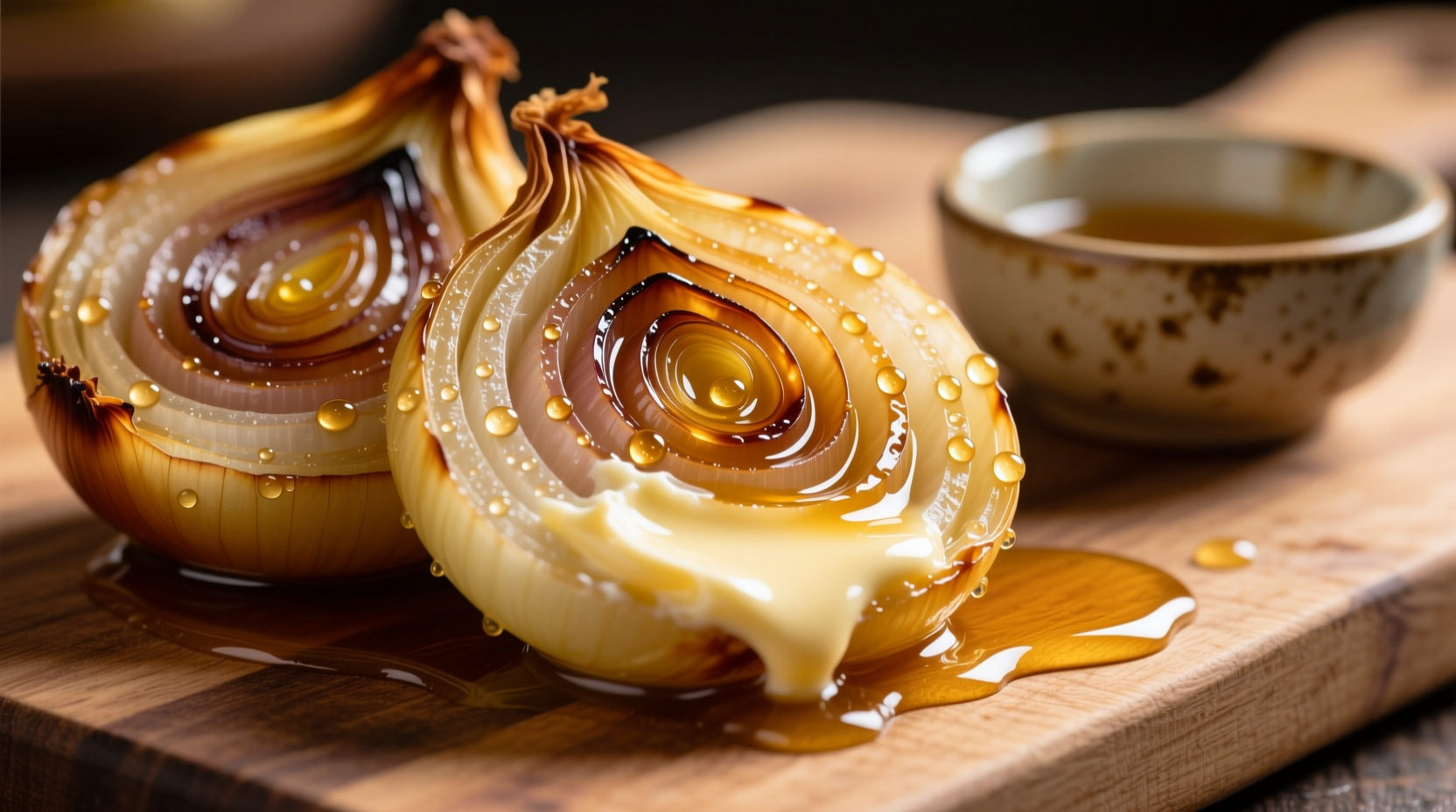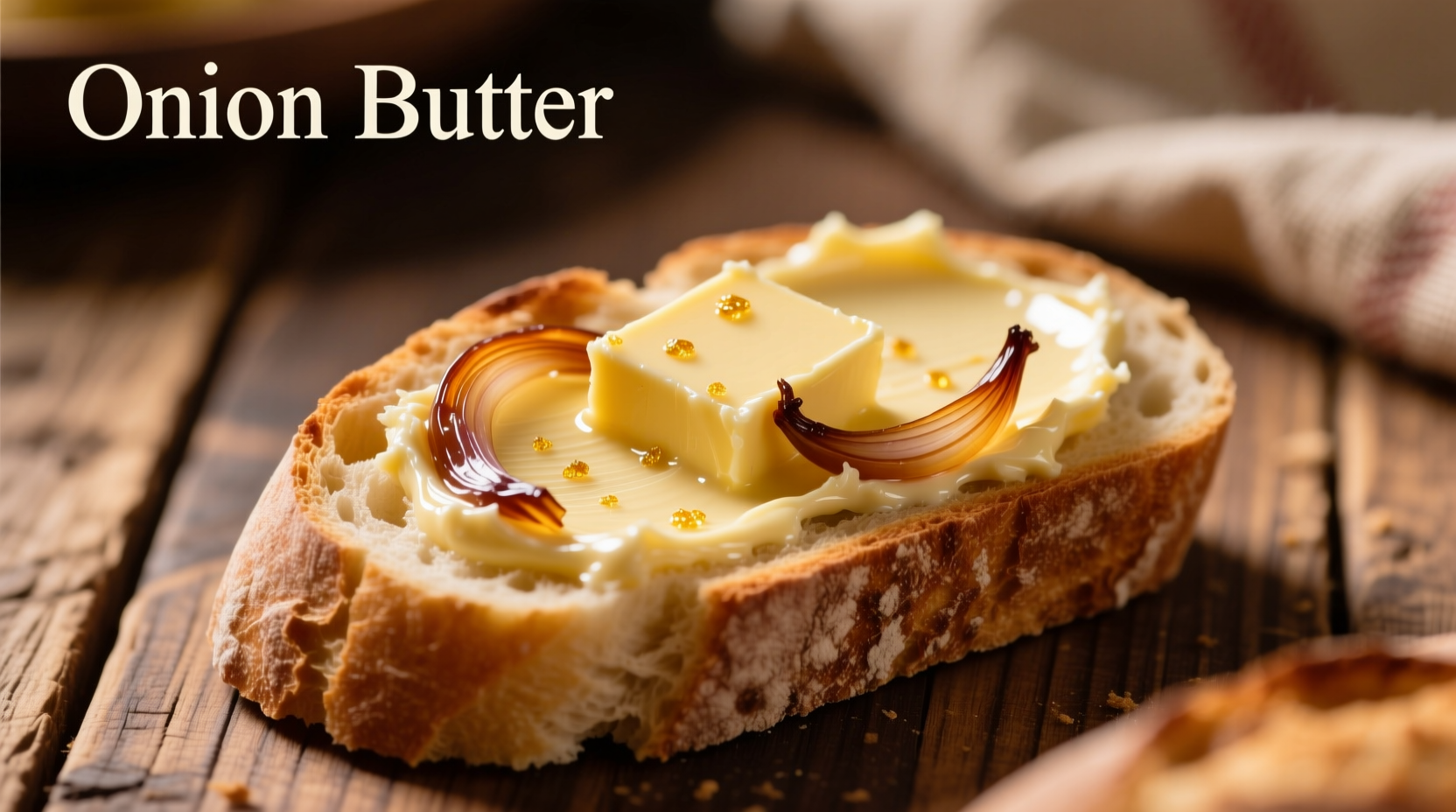Onion butter is a versatile compound butter made by combining softened butter with caramelized onions, herbs, and seasonings. This simple preparation enhances dishes with rich umami depth and subtle sweetness, working perfectly for steak toppings, vegetable finishes, pasta sauces, and bread spreads. Properly made onion butter lasts 1-2 weeks refrigerated or up to 3 months frozen while maintaining optimal flavor.
Unlock the secret weapon professional chefs keep in their refrigerators: onion butter. This humble compound butter transforms ordinary meals into extraordinary culinary experiences with minimal effort. Whether you're searing a steak, finishing roasted vegetables, or elevating simple pasta, onion butter delivers complex flavor with remarkable ease.
The Science Behind Flavor Transformation
When onions caramelize, their natural sugars undergo the Maillard reaction, creating over 500 distinct flavor compounds. Combined with butter's fat content—which carries and distributes these flavors throughout your dish—you get an exponential flavor boost. According to research from the USDA Food Research Laboratory, properly caramelized onions develop glutamates that enhance umami perception by up to 40% compared to raw onions.
| Onion Variety | Caramelization Time | Best Butter Pairing | Flavor Profile |
|---|---|---|---|
| Yellow Onions | 25-30 minutes | Unsalted European-style | Balanced sweet-sharp |
| Shallots | 15-20 minutes | Cultured butter | Delicate, nuanced |
| Red Onions | 20-25 minutes | Unsalted with lemon zest | Vibrant, slightly tart |
| Green Onions | 8-10 minutes | Unsalted with garlic | Fresh, grassy |
Mastering the Perfect Onion Butter
The difference between good and exceptional onion butter lies in technique. Professional chefs follow these precise steps:
- Selection: Choose firm, heavy onions with dry skins—avoid any with soft spots
- Preparation: Slice uniformly (1/8-inch thickness) for even cooking
- Caramelization: Cook slowly over medium-low heat with 1 tablespoon oil per onion
- Moisture Control: Add 1/4 teaspoon baking soda per onion to accelerate browning without burning
- Butter Integration: Fold in 1 cup softened unsalted butter per 2 cups caramelized onions
- Seasoning: Finish with 1 teaspoon fresh thyme, 1/2 teaspoon black pepper, and salt to taste
According to culinary research from The Culinary Institute of America, the critical temperature range for optimal flavor development in caramelized onions is between 285°F and 320°F (140°C-160°C). Exceeding this range creates bitter compounds that diminish the final product's quality.

Strategic Culinary Applications
Understanding when and how to use onion butter separates novice cooks from professionals. This versatile ingredient shines in specific applications while being inappropriate in others:
| Best Applications | When to Avoid |
|---|---|
| Finishing grilled meats (add during last 2 minutes of cooking) | With delicate seafood like sole or flounder |
| Enhancing roasted root vegetables | In dishes requiring pristine white sauces |
| Base for pan sauces (deglaze with wine first) | With strongly flavored blue cheeses |
| Compound butter for crusty bread | In desserts or sweet applications |
Preservation Techniques for Maximum Freshness
Proper storage determines whether your onion butter maintains peak flavor or deteriorates quickly. Follow these professional guidelines:
- Refrigeration: Store in airtight container for 10-14 days (USDA Food Safety guidelines)
- Freezing: Portion into ice cube trays, then transfer to freezer bags for 3 months
- Vacuum Sealing: Extends freezer life to 6 months without flavor degradation
- Oil Barrier: Top refrigerated butter with 1/8-inch oil layer to prevent oxidation
Food science research from University of Minnesota Extension confirms that butter-based preparations maintain optimal quality when stored below 40°F (4°C), with flavor compounds beginning to degrade significantly after 14 days under standard refrigeration.
Avoiding Common Preparation Mistakes
Even experienced cooks make these critical errors when preparing onion butter:
- Rushing caramelization - High heat creates bitter compounds instead of sweet complexity
- Adding salt too early - Draw out moisture and prolong cooking time unnecessarily
- Using salted butter - Makes proper seasoning impossible (control your salt separately)
- Over-processing - Blending creates emulsion issues; gentle folding preserves texture
- Incorrect onion-to-butter ratio - More than 2:1 onion:butter ratio causes separation
Historical Evolution of Onion Butter
Onion butter's journey through culinary history reveals why it remains relevant today:
- 16th Century: French chefs documented "beurre aux oignons" as a sauce base for roasted game
- 18th Century: Became standard finishing technique for beef in European aristocratic kitchens
- Early 1900s: American steakhouse tradition adopted it as the "steakhouse butter"
- 1970s: Julia Child popularized simplified home preparation methods
- Present Day: Modern chefs use it as flavor foundation for diverse global cuisines
This evolution demonstrates how a simple preparation technique has maintained relevance by adapting to changing culinary trends while preserving its fundamental flavor-enhancing properties.
Professional Chef's Pro Tips
Take your onion butter to the next level with these advanced techniques:
- Add 1 tablespoon apple cider vinegar during final caramelization for brighter flavor
- Infuse butter with fresh thyme sprigs while softening for herbal complexity
- Use onion butter as base for compound butters (add blue cheese or horseradish)
- Freeze in piping bags for precise portioning directly onto hot dishes
- Create layered flavor by adding caramelized onions in three stages during cooking











 浙公网安备
33010002000092号
浙公网安备
33010002000092号 浙B2-20120091-4
浙B2-20120091-4